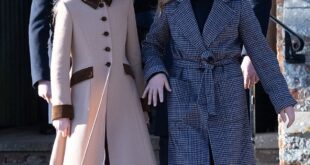As part of the Chronicle’s reporting into these changes, this week we take a look at some of the biggest projects on the horizon and how they will shape the town of tomorrow.
A total of 6,219 flats across 13 developments are at various stages of the planning process as developers seek to build new properties in the town.
A project to replace the Reading Station Shopping Park was controversially approved by the government this March.
One of the buildings would stand 18 storeys tall, towering over the train station.

Meanwhile, a tower at the former Royal Mail depot site at 80 Caversham Road will stand at 25 storeys tall, becoming one of the tallest buildings in the town.
This project would see 620 apartments built within six new buildings.
Investment company Hermes won final approval for the project in Spring 2023. It is understood that the site will be sold to a developer for delivery.

Caversham Road in particular will become a hub of activity in the coming years, with two landmark businesses that closed being transformed into places to live.
The old Carters outdoor sports store is being demolished to make way for 60 homes.
Notably, this development will be a mix of 50 flats and 10 four-bedroom houses contained in two terraces.
Not far away, the standout Drews the Ironmongers building will be partially demolished and redeveloped so that 29 homes can be created.
As well as physical changes in the form of buildings, experts anticipate huge social changes could be on the horizon too.
The arrival of artificial intelligence systems could replace nearly eight million jobs in the UK by 2030 and Reading Borough Council pushing for net zero carbon emissions in the town.
These developments are in line with an AI prediction for how Reading will change in 10 years as sites are repurposed and turned into living places.
When asked for its prediction of how the town will change, ChatGPT, a free-to-use AI system which obtains information from online sources, guesses: “Over time, cities often undergo urban renewal projects, and Reading may experience ongoing rejuvenation in a decade.
“This could include the redevelopment of older areas, revitalization of public spaces, and the transformation of underutilised or abandoned spaces into vibrant community hubs.”
To the south, work is beginning on the ambitious ‘Royal Elm Park’ project, that will see 600 apartments and new facilities built on the grounds of the Select Car Leasing Stadium.
Check out where each massive development will be in the graphic below:
The Oracle transformation project would see 436 flats added to the centre, and the former John Lewis distribution centre over the road from the centre will see 200 apartments created within one new building.
The upshot of all of these projects is that in 10 years time, Reading will be a town of shining towers.
It may even be a city by that time as well. Places must acquire a royal charter from the monarch to become a city, with Reading missing out on this privileged status in 2022 as part of Queen Elizabeth II’s Platinum Jubilee.
It is unclear when the next round of ‘city making’ will be, but an event is expected to commemorate the reign of King Charles III.
AI has also been used to give an impression of what the town could look like in 2034.
CGIs show futuristic views of the area south of Broad Street Mall, which is set for 1,200 flats.

These are split into two projects, with 644 apartments being delivered within the plan for towers built to the rear of the mall, and a further 600 created for Reading Borough Council’s Minster Quarter project.
If approved, both projects will be delivered by McLaren Living.
The CGIs show perspectives looking from the skyline and at ground level.

Meanwhile, other AI images show the Station Shopping Park replaced with futuristic apartments.

The sheer amount of flats on the way in the town has naturally led to concerns about infrastructure.
Reading is meant to have a new hospital in the 2030s as part of a government programme.
But it is not clear where the new hospital will be, as planners mull over whether it should be built on the existing Royal Berkshire Hospital site, or relocated to a site near the M4, at Thames Valley Science Park in Shinfield or Thames Valley Park in Earley.
The latter two proposals would take the hospital out of Reading into Wokingham Borough.
Meanwhile, progress is being made on building the 1,500 pupil River Academy secondary school in Richfield Avenue, near the Reading Festival site and not far from the upcoming homes in Caversham Road.
The school is meant to open this September.
The council’s vision for where development should be is contained within its Local Plan partial update.
A draft of the update is due to go to public consultation this November, before it is sent to the government’s planning inspectorate for approval.



